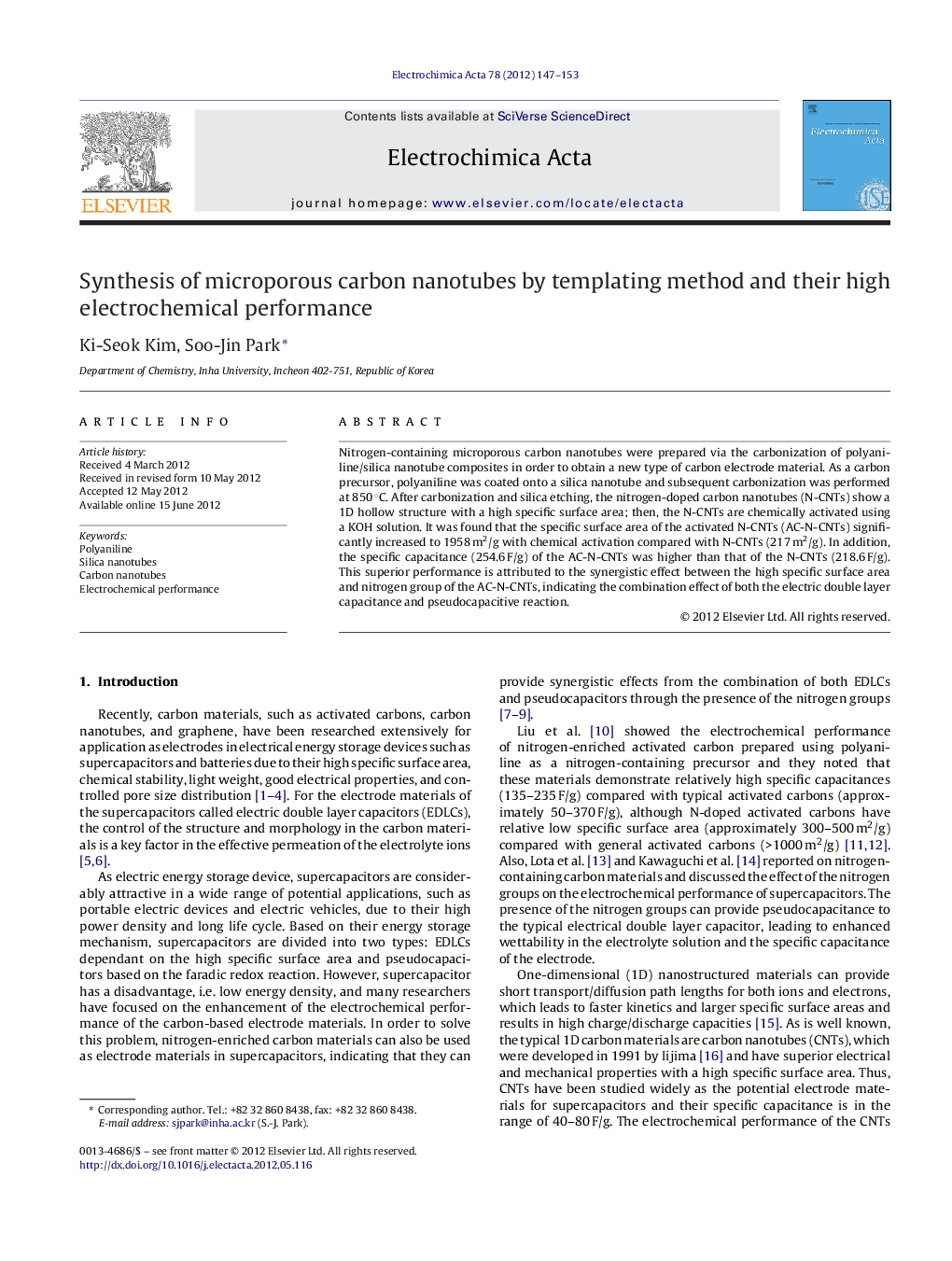| Article ID | Journal | Published Year | Pages | File Type |
|---|---|---|---|---|
| 188298 | Electrochimica Acta | 2012 | 7 Pages |
Nitrogen-containing microporous carbon nanotubes were prepared via the carbonization of polyaniline/silica nanotube composites in order to obtain a new type of carbon electrode material. As a carbon precursor, polyaniline was coated onto a silica nanotube and subsequent carbonization was performed at 850 °C. After carbonization and silica etching, the nitrogen-doped carbon nanotubes (N-CNTs) show a 1D hollow structure with a high specific surface area; then, the N-CNTs are chemically activated using a KOH solution. It was found that the specific surface area of the activated N-CNTs (AC-N-CNTs) significantly increased to 1958 m2/g with chemical activation compared with N-CNTs (217 m2/g). In addition, the specific capacitance (254.6 F/g) of the AC-N-CNTs was higher than that of the N-CNTs (218.6 F/g). This superior performance is attributed to the synergistic effect between the high specific surface area and nitrogen group of the AC-N-CNTs, indicating the combination effect of both the electric double layer capacitance and pseudocapacitive reaction.
Graphical abstractThis described the scheme of the nitrogen-doped microporous carbon nanotubes prepared with silica nanotube and polyaniline as carbon precursor.Figure optionsDownload full-size imageDownload as PowerPoint slideHighlights► Nitrogen-doped carbon nanotubes are prepared with silica nanotube and polyaniline. ► N-doped carbon nanotube (N-CNTs) is obtained with carbonization and silica etching. ► Porous N-CNTs (AC-N-CNTs) is prepared with chemical activation using KOH. ► AC-N-CNTs show increased specific capacitance compared to N-CNTs. ► It is due to the combination effect by high specific surface area and nitrogen group.
